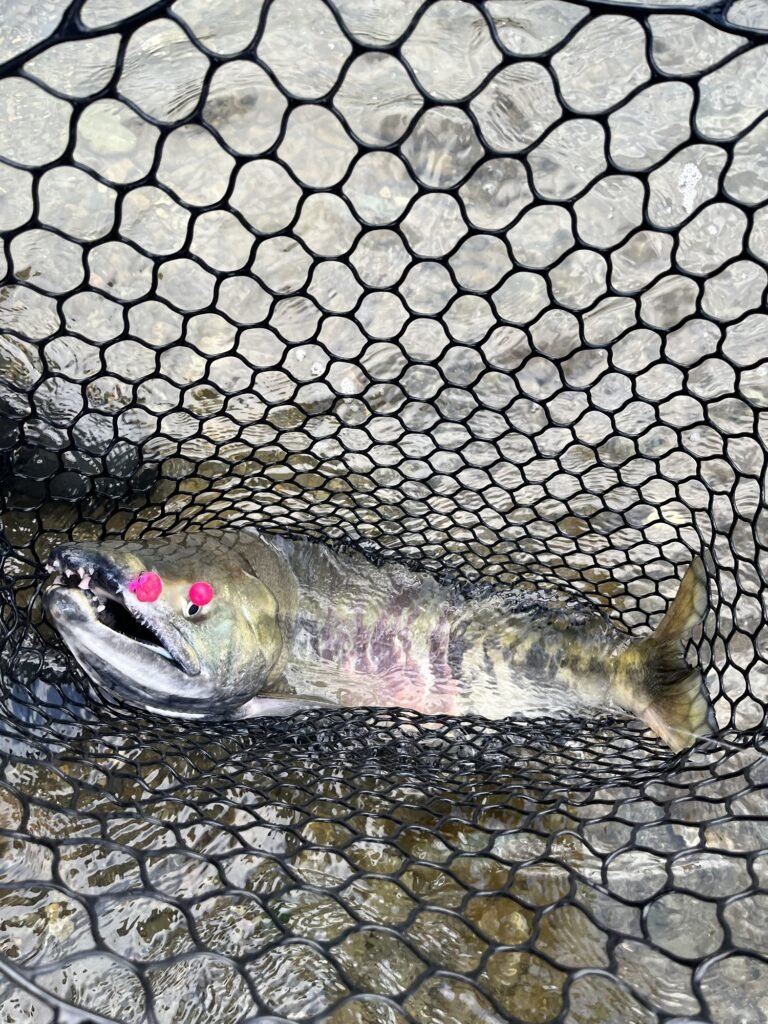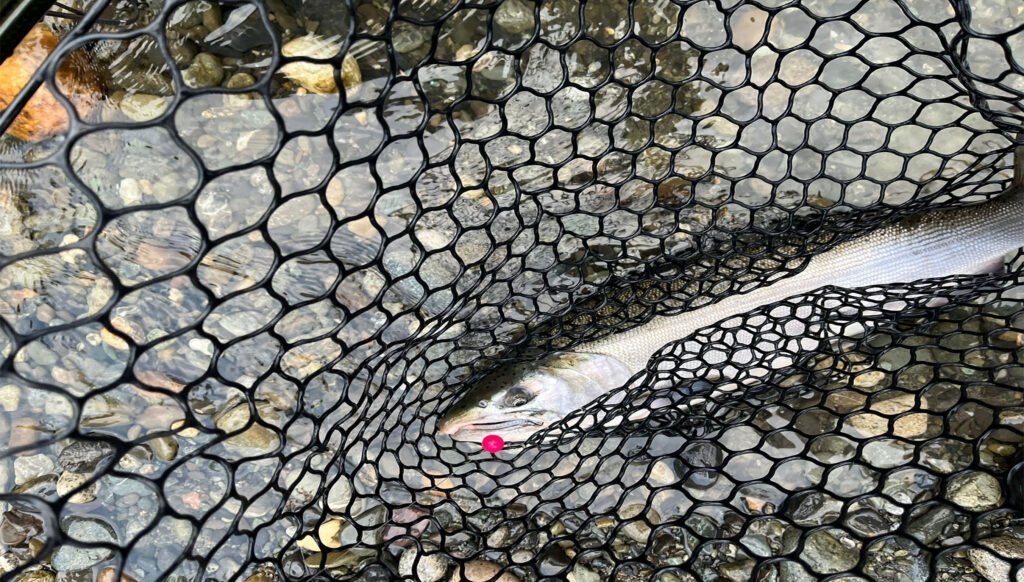Float Fishing in Canada: Top Tips for Success Now
Feeling a fish strike your float on a Canadian river is thrilling. Whether it’s a steelhead in Ontario or a coho salmon on the West Coast, float fishing is key. It’s a top method for catching these species in freshwater. Learning it can greatly improve your success rate.
Over 70% of Ontario river anglers use Centerpin reels now. They catch five times more fish than traditional methods1. This guide will share expert tips to help you connect with nature and catch fish.
Imagine you’re on the Niagara River, adjusting your 12- to 14-foot rod for fast currents1. With the right fishing gear, you’ll face challenges head-on. Losing your first big fish is common, but 75% of guided anglers catch their first fish right away1.
Whether you’re after chinook salmon (often over 15kg) in British Columbia2 or steelhead in Alberta, this article has you covered. It’s filled with fishing tips for Canada’s diverse freshwater. Every detail, from rod lengths to leader choices, is based on data. This ensures your next fishing trip will be a success.
Understanding Float Fishing Fundamentals
Learning the basics of float fishing is key to success in Canadian waters. It’s all about choosing the right float and setting it up correctly. Understanding how physics and gear work together is essential for better presentations.
The Physics Behind Effective Float Fishing
Rods between 10½ and 15 feet are best for control. Longer rods (13–15ft) are great for centerpin fishing3. Use fluorocarbon leaders (8–32 inches) to make your line less visible, mimicking natural bait3.
Steelhead usually feed near the bottom, so place your bait 12 inches above the riverbed for better chances3.
Different Types of Floats and Their Uses
| Type | Use Case | Species |
|---|---|---|
| Pencil Float | Calm waters, precise depth control | Trout, Panfish |
| Pear Float | Medium current, midwater presentations | Walleye, Smallmouth Bass |
| Cigar Float | Fast/slow flows, versatility | Steelhead, Salmon |
Floats come in different materials. Foam floats are affordable, while Drennan-style clear floats are best for clear water3.
Reading Your Float for Strike Detection
- Subtle Twitches: Trout often signal bites with slight wobbles3.
- Sharp Dives: Pike or salmon may pull the float under swiftly.
- Line Tension Changes: Adjust sensitivity by varying leader length (6–10lb fluorocarbon preferred3).
Practice telling the difference between false indicators and real bites. This will help improve your angling techniques4.
Essential Float Fishing Gear for Canadian Waters
Choosing the right fishing tackle is key. It must match Canada’s varied waterways. A 9- to 11-foot medium-action rod and a levelwind or centerpin reel are ideal for most conditions5. This setup is sensitive for light bites and handles current and wind well.
For panfish, use 6-8 lb test line. For pike or walleye, go with 10-15 lb test line.
| Rod/Reel Setup | Line Strength | Species Target |
|---|---|---|
| 9-10.5ft rod | 4-8 lb test | Trout, panfish |
| 11ft centerpin | 10-15 lb test | Pike, salmon |
Choosing quality fishing equipment is critical. Small 15g floats are best for shallow streams5. For rivers like the Fraser or Skeena, use 30g floats. Fixed floats are good for calm waters, while sliding setups work better in currents6.
BeadnFloat soft beads are versatile. Their 6-8mm sizes mimic trout eggs, attracting trout. For salmon, use 14-19mm beads in coastal streams6. Pair beads with Aberdeen hooks—size 10-14 for finesse and 6-8 for bass.
- Terminal tackle: Add split shots 12-18 inches above the hook for depth control5
- Use 8-12 lb fluorocarbon leaders to reduce visibility in clear water
- Pack gear in plastic trays to meet weight limits on fly-in trips7
Every part of your gear, from rod tip to leader tip, affects your success. Balanced gear helps detect bites and set hooks well. Focus on sensitivity and durability for Canadian waters.
Mastering Float Setup and Rigging Techniques
Setting up your fishing float right means matching it to the water depth and the fish you’re after. For waters less than 6 feet deep, slip floats work great because you can adjust their depth8. Pole floats are better for deeper waters, like 12-15 feet, because of their 1¼ oz weights8. Use 8-12lb fluorocarbon leaders to stay hidden and handle big fish strikes8.
Choose a TFO Professional 7’ Medium Power rod and a Daiwa BG MQ 3000 reel for better control9. For fishing near structures, use 15lb braided line to avoid getting snagged9. Add BeadnFloat soft beads 6-8 inches above the hook for a natural movement9.
| Rig Type | Depth Range | Weight | Line Type |
|---|---|---|---|
| Slip Float | 0-6ft | 10-15lb braid | Improved clinch knots |
| Pole Float | 12-15ft | 1¼ oz | 30lb mono leader |
Adjust your leader length based on the current speed. Add 1-2 split shots 12 inches above the hook in fast currents8. For panfish, use 18-inch leaders; for pike, go up to 30 inches. Always use improved clinch knots to avoid losing fish8.
Start with 18-inch leaders and adjust as needed based on fish activity. In clear water, use 5mm BeadnFloat beads in natural colors for better results9. The right tackle, like 3/0 octopus hooks and fluorocarbon, helps in pressured waters8.
Seasonal Approaches to Float Fishing Across Canada

Changing your float fishing ways with the seasons can really help you catch more fish in Canada. Whether it’s spring or winter, knowing how to fish in each season is key. This way, you match your fishing with how fish behave and the water conditions.
Spring Strategies When Waters Are Rising
- Use larger floats and high-visibility beads (14-19mm) to cut through turbid water.
- Lengthen leaders to 24-36 inches to handle faster currents while maintaining control.
- Focus on deeper runs where fish hold during snowmelt10.
Summer Tactics for Clear and Warm Waters
- Switch to smaller 6-8mm beads and clear leaders to avoid detection in low, clear flows.
- Position floats higher on the line to keep baits near the bottom where fish feed actively.
- Target shaded banks or riffles where species like walleye rest during midday heat.
Fall Approaches for Feeding Frenzies
Autumn is a great time to catch fish. Here’s how:
- Deploying vertical presentations in rivers as salmon and trout move upstream10.
- Timing your efforts with peak runs—Coho salmon enter West Coast rivers in September, followed by chinook and chum later10.
- Using scented baits to trigger strikes during aggressive feeding phases.
Winter Techniques for the Dedicated Angler
Ice doesn’t stop the fish from biting. Here’s what to do:
- Target tailwater sections below dams, which stay open year-round11.
- Shorten leaders to 18-24 inches and use 1/16-ounce jigs for vertical drifts in slow currents10.
- Focus on midday sun patches where fish warm up. Wear a life vest when wading icy streams11.
Changing your rig and where you fish with the seasons can keep your catch rate up. Learn about the local waters and adjust your bait depth to match where the fish are.
Top Canadian Destinations for Float Fishing Success
Canada is a paradise for freshwater fishing, with many rivers to explore. The Fraser River in British Columbia is famous for salmon in the fall12. Alberta’s Bow River is great for rainbow and brown trout, with anglers catching 30–40 fish in an hour13.
Manitoba’s North Seal region is perfect for catching big pike, lake trout, and arctic grayling in one trip12.
| Province | River/Lagoon | Top Species | Best Months |
|---|---|---|---|
| British Columbia | Fraser River | Chinook salmon | September–October |
| Alberta | Bow River | Rainbow/brown trout | May–September |
| Ontario | Grand River | Walleye, muskie | April–November |
| Quebec | Cascapedia River | Atlantic salmon | June–August |
Ontario’s Lake of the Woods is great for fishing all year, with over 250,000 lakes to choose from12. You can fly in for a wilderness adventure or drive to a campground for a budget-friendly trip14. There are luxury resorts for guided fishing and self-guided trips for exploring on your own14.
For a unique experience, try Alberta’s Bow River in spring for dry-fly fishing or Quebec’s Cascapedia for historic Atlantic salmon runs12. With so many options, you’ll find the perfect spot for your fishing trip.
Species-Specific Float Fishing Tactics
Adjusting your float fishing can lead to better catches. Whether you’re after trout in rivers or panfish in lakes, the right gear makes a big difference. BeadnFloat’s products help you match each fish’s habits.

Trout Techniques for Aggressive Bites
Trout, like brook and rainbow, prefer egg imitations. Use 6–10mm Soft Beads from BeadnFloat for this. Steelhead and rainbow trout need slower drifts to bite.
Trout mostly feed downward, so bait near the bottom. Use split shots to adjust float depth for this.
Strategies for Walleye and Pike
Walleye and northern pike need bold presentations. Use 12–16mm beads in minnow rigs. Choose fluorocarbon leaders to hide from them.
Drift live minnows 2–3ft above the riverbed. This is where pike ambush their prey.
Panfish Approaches That Fill Creels
Lake fishing for bluegill and perch works best with ultra-light setups. Pair 6–8mm beads with #10 hooks. Slowly retrieve baits just above the lake bottom to trigger strikes.
When panfish are picky, try 4mm beads for a natural look15.
Choose line strength based on the species. Walleye need 12–15lb mainlines in rivers16. Panfish can handle 4–6lb test. Try different BeadnFloat bead sizes to match local forage. Always match presentation speed to water flow to get bites16.
River Float Fishing: Reading Water and Presentation
Mastering river fishing means understanding how water currents affect fish. Anglers need to learn to read structures like current seams and undercut banks. This helps find where fish are likely to be. Here, we’ll cover the best techniques for presenting your bait and catching fish.
Understanding Current Seams and Holding Areas
Most water is not good for fishing, so focus on key spots. Current seams, where fast and slow currents meet, are great for feeding fish17. Look for eddies behind rocks or undercut banks where fish rest17. Fish often stay close to the bottom, so adjust your float depth to match18.
| Feature | Location | Tactic |
|---|---|---|
| Current Seams | Confluence of currents | Present bait along seams with high-vis lines19 |
| Eddies | Behind obstructions | Slow drifts to mimic natural movement17 |
| Undercut Banks | Riverbanks | Cast 6-8ft past target zones17 |
Drift Management in Flow Conditions
Controlling your drift is key to catching fish. Use bright braided lines to see where your bait is going and adjust for currents19. When the current is strong, lift your rod tip to slow down your drift. Longer drifts can cover more water but need careful line management17.
- Always cast slightly upstream to avoid spooking fish17
- Let bait sink to the strike zone before retrieving17
- Adjust float depth based on water temperature and fish activity levels
Bank Fishing vs. Wading Strategies
Position yourself slightly upstream of target zones to prevent spooking fish and ensure accurate presentations.
Bank anglers should target visible seams while wading lets you access deeper runs. Use shorter casts from the bank but extend reach when wading. High-visibility lines help when wading19. Cast at 45-degree angles to cover seams thoroughly17.
Mastering these river fishing strategies can increase your catch rate. Focus on areas where most fish are found17. Practice reading currents and adjusting your presentation to outfish others with these proven techniques and tips.
Lake and Stilwater Float Fishing Methods
Mastering lake fishing means adjusting your float fishing method. Wind helps guide your rig over structures. Slip floats help you adjust the depth for fish that are suspended in the water.
Pair BeadnFloat soft beads with your fishing float setup. They move naturally in clear, calm water20. Use wind to make your baitfish drift like it’s natural, which is great in big Canadian lakes.
| Depth Range | Line Type | Target Species |
|---|---|---|
| 0–7.5 m | Floating lines | Shoal zone panfish |
| 3–6 m | Intermediate sinking | Suspended crappie |
| 6–12 m | Fast-sinking | Deep-water perch |
“The float-and-fly technique is a ‘chuck-and-duck’ approach, prioritizing simplicity over complexity.”20
Here are some tips to adjust your rig:
- Put split-shot at least 30 cm above your hook to avoid snagging21.
- Use 50–60 cm leaders for better bait control21.
- Match line type to depth zones using the table above22.
Target fish in thermocline layers in spring and fall. This is where fish cluster20. British Columbia has over 20,000 lakes, perfect for fishing. Southern lakes have stocked trout in depths under 400 hectares22.
Check surface temps between 10–18°C for peak insect activity22. When fish are slow, slow retrieves with BeadnFloat’s action can get bites in pressured waters.
Use a depth sounder with a 50° cone angle to find structure. Then, anchor your rig at good depths. Change your retrieves daily. Fish move zones based on oxygen levels and bait migrations20.
Advanced Float Fishing Techniques for Experienced Anglers
Mastering angling techniques means adjusting your fishing tackle for tough fish and harsh conditions. For those looking to improve, specialized setups and precise tactics can help.
As a guide, I change my baits often, strategically adjusting for light, water clarity, and pressure.
Long-Distance Control Methods
Use 13- to 15-foot rods to cast over 100 feet23. Choose thin, high-visibility mainlines with a Diaflash 3lb rod for casting over 100 yards24. In windy conditions, a 90g controller float boosts hooking success24.
Adjust the float’s depth by 1 meter above the seabed with weighted rigs. This keeps bait suspended where fish are most active23.
Multi-Depth Rigs for Full Coverage
Use tandem rigs with floats 3-4m apart to target mid-water species like mackerel23. A beach caster rig can cast 40 yards in calm weather24. Pair 6ft hooklinks with 40-80cm spacing to avoid tangles23.
This setup targets 23 species, from pollack to garfish, by efficiently covering vertical zones23.
Outsmarting Pressured Fish
When fish become cautious, use 4-6lb test leaders and fluorocarbon for stealth24. Switch to slim shank hooks to reduce snagging. Change bait presentation every 10-15 minutes, using 5kg of bait to keep birds away24.
Self-hooking systems can trigger strikes even in storms, taking advantage of fish’s predictable feeding times24.
Troubleshooting Common Float Fishing Challenges
Mastering float fishing means being ready for anything. These fishing tips and gear tweaks help you keep fishing well, even when things get tough.
Dealing with Wind and Weather Factors
- Attach a fishing equipment like BeadnFloat’s 6mm soft beads to improve visibility in windy conditions25.
- Use weighted floats to stabilize drifts and add a second bead below the float to prevent loss25.
- Cast into the wind or angle your position to reduce line interference.
Adjusting to Rapidly Changing Water Conditions
When water levels change, change your setup. If flows drop and clear, target deeper runs where fish hold26. Use smaller floats and lighter weights to stay in the strike zone. For stained or rising water, increase float size to maintain control25.
Overcoming Difficult Bites and Lockjaw
When fish refuse, downsize aggressively. Replace jures with BeadnFloat’s 6mm beads and add micro-pauses in your drift. Use lighter leaders and shorter snells to reduce detection25. Test ¼-½ oz floats paired with split shots placed 12-18 inches above the hook25. If bites stay shut, switch to fluorocarbon line for stealth.
Pair these tactics with the fishing equipment that matches conditions. Always carry extra beads, leaders, and float styles to adapt quickly. Practice these fixes to stay ahead of challenges on the water.
Conclusion: Elevating Your Float Fishing Experience in Canadian Waters
Mastering float fishing is about combining skills with the right gear. Pro anglers catch more fish by perfecting techniques like using 12-foot leaders in shallow areas27. This shows how important practice and quality gear, like BeadnFloat’s soft beads, are.
Canada’s waters are threatened by 15 new invasive species every year28, costing billions. To protect these ecosystems, follow guidelines. This includes checking water quality (E. coli ≤126 cfu/100 mL)29 and adjusting your fishing tactics based on the conditions.
Successful fishing tips include adapting to fish behavior. For example, switching flies if surface bites slow. Sustainable practices help keep fisheries thriving and waters safe for future trips.
The economic impact of controlling sea lamprey is $22M annually28, showing the need for conservation. Use fishing tackle that fits the conditions and keep learning. By using proven methods and being aware of water quality and invasive species risks, anglers can improve their catches while protecting Canada’s aquatic resources.
Stay updated on local guidelines and adjust your strategies to excel in float fishing’s challenges and opportunities.
Source Links
- https://ontariotroutandsteelhead.com/float-fishing/
- https://www.gofishbc.com/learn/fishing-tips/river-fishing/fall-salmon-fishing-float-fly-and-bar-fishing-tips/
- https://www.glangler.com/blogs/articles/floating-fundamentals-by-dan-robson
- https://bentrods.ca/blogs/always-in-pursuit-blog/float-fishing-101?srsltid=AfmBOooK70mUSGnFZRgXooSsMA5Gu7MN61NoOIsAqVU7PLMHPDUcb0HZ
- https://fishingsun.com/a/blog/how-to-set-up-a-rig-with-float-a-guide-float-fishing-for-beginners
- https://addicted.fishing/blogs/news/steelhead-float-fishing-the-finer-points?srsltid=AfmBOopp7cgYvsobjszwpSj_qi0fcVjXdB5jCY5fKrv0u1lG6hWW3Mdi
- https://midwestoutdoors.com/fishing/canadian-fishing-trip-preparation-tackle-and-gear-for-your-fishing-vacation/
- https://www.saltstrong.com/articles/rigging-slip-float/
- https://www.saltstrong.com/articles/everything-about-slip-float-rigs/
- https://www.in-fisherman.com/editorial/float-fishing-steelhead/369177
- https://www.themeateater.com/fish/freshwater/how-to-pull-off-a-cast-and-blast-float
- https://ganglers.com/the-best-places-in-canada-for-remote-trophy-fishing/
- https://www.bowriverblog.com/float-fishing-the-lower-bow-river/
- https://ganglers.com/choosing-the-right-canadian-fishing-resort-an-anglers-guide/
- https://fishny.com/float-fishing/
- https://ontariotroutandsteelhead.com/float-fishing-for-salmon-in-ontario/
- https://troutandsteelhead.net/covering-the-water-when-float-fishing/
- https://www.flyfisherman.com/editorial/reading-the-water/152121
- https://www.salmonandsteelheadjournal.com/mastering-your-presentation/
- https://www.tu.org/magazine/fishing/trout-tips/try-the-float-and-fly-technique-for-still-water-trout/
- https://www.gofishbc.com/learn/fishing-tips/lake-fishing/three-basic-fishing-setups-for-lake-fishing/
- https://www.gofishbc.com/learn/fishing-tips/lake-fishing/10-tips-for-stillwater-fishing-success/
- https://www.talkseafishing.co.uk/articles/float-fishing-techniques.1361/
- https://badangling.com/carp/two-killer-float-fishing-tactics-floater-fishing-setups-and-more/
- https://www.salmonandsteelheadjournal.com/ten-tips-for-better-float-fishing/
- https://flylordsmag.com/everything-you-need-to-know-about-float-fishing/
- https://www.bowriverflyfishing.ca/blog/
- https://www.dfo-mpo.gc.ca/species-especes/publications/ais-eae/plan/index-eng.html
- https://www.canada.ca/en/health-canada/services/publications/healthy-living/guidelines-canadian-recreational-water-quality-summary-document.html





Add comment